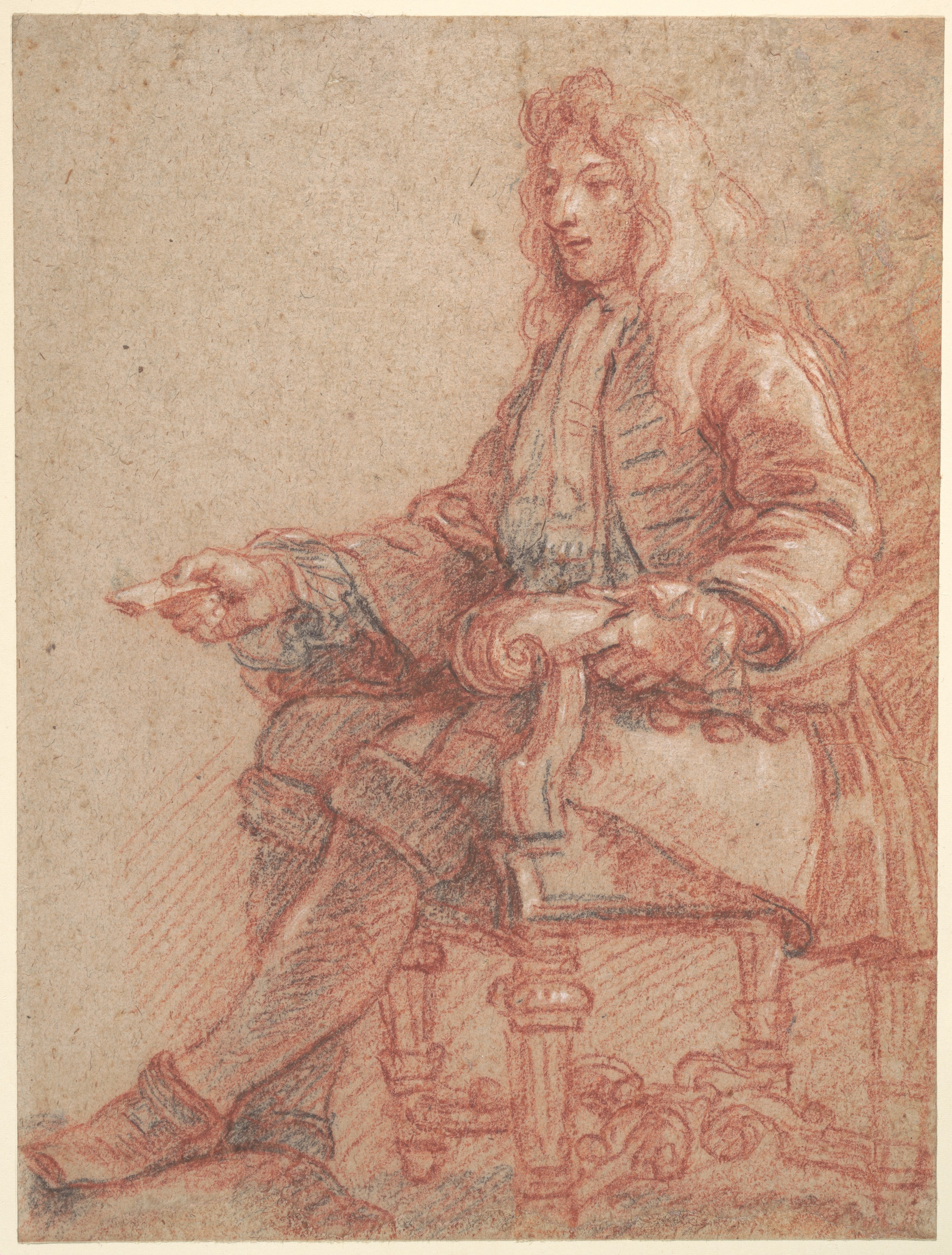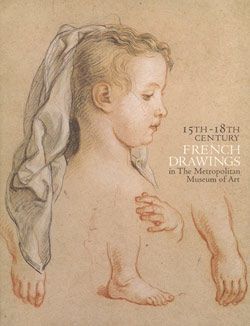Gentleman Seated in an Armchair
Charles de la Fosse French
Not on view
After a trip to Italy from 1659 to 1664, to which he certainly owed his taste for color, La Fosse entered Le Brun’s studio some time after 1665. He worked under his direction at the Château des Tuileries and then contributed to the decoration of the grands appartements at Versailles. La Fosse also created décors for private mansions and parisian churches.
Lively in its execution, this drawing cannot be connected with a known painting. Although the genre of portraiture experienced a true golden age during the reign of Louis XIV, it was a subject La Fosse treated only on very rare occasions, thus one can assume that this sheet is probably a drawing made for its own sake. Its attribution is based on stylistic grounds, namely the idiosynchratic use of trois crayons, a mixture of red, black, and white chalks that La Fosse would have learned from Rubens and transmitted to Watteau.
The sitter, certainly drawn from life, is portrayed three-quarter length, seated in a lavish Louis XIV armchair, and clad in an outfit that suggests a date in the last years of the 17th or the first years of the 18th century, as evidenced by his wearing of a rabat (flat collar adorned with lace) accompanied by lace cuffs called rebras. While the sitter’s identity remains unknown, his attire, his wig and his posture all suggest a wealthy and high-ranking man, certainly a gentleman. Against a neutral background, the portrait is animated by the implied narrative of the folded note he offers with his right hand.
In contrast to the French tradition of trois crayons portraits (established by the Clouet family at the beginning of the XVIth century), La Fosse does not produce a detailed rendering of the sitter’s expression, but rather focusses on his pose and costume, using a brusque application of chalk to lay down contours and shading. A sense of natural light, coming from the right, is conveyed by the pale tonality of the paper left in reserve and through the discrete use of white chalk highlights. The energy of the sheet is due in part to the repetition of curvilinear lines, from the rounded forms of the buttons on the man’s jacket, to the ornamental flourishes on the base and armrest of his chair.
Due to rights restrictions, this image cannot be enlarged, viewed at full screen, or downloaded.
This artwork is meant to be viewed from right to left. Scroll left to view more.






